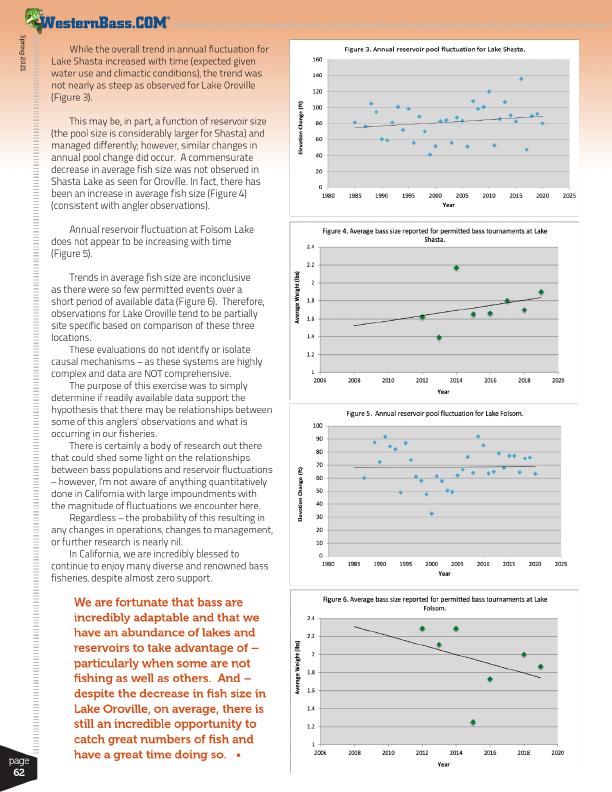
®
Spring 2021
page 62
While the overall trend in annual fluctuation for Lake Shasta increased with time (expected given water use and climactic conditions), the trend was not nearly as steep as observed for Lake Oroville (Figure 3).
This may be, in part, a function of reservoir size (the pool size is considerably larger for Shasta) and managed differently; however, similar changes in annual pool change did occur. A commensurate decrease in average fish size was not observed in Shasta Lake as seen for Oroville. In fact, there has been an increase in average fish size (Figure 4) (consistent with angler observations).
Annual reservoir fluctuation at Folsom Lake does not appear to be increasing with time (Figure 5).
Trends in average fish size are inconclusive as there were so few permitted events over a short period of available data (Figure 6). Therefore, observations for Lake Oroville tend to be partially site specific based on comparison of these three locations.
These evaluations do not identify or isolate causal mechanisms – as these systems are highly complex and data are NOT comprehensive.
The purpose of this exercise was to simply determine if readily available data support the hypothesis that there may be relationships between some of this anglers’ observations and what is occurring in our fisheries.
There is certainly a body of research out there that could shed some light on the relationships between bass populations and reservoir fluctuations – however, I’m not aware of anything quantitatively done in California with large impoundments with the magnitude of fluctuations we encounter here.
Regardless – the probability of this resulting in any changes in operations, changes to management, or further research is nearly nil.
In California, we are incredibly blessed to continue to enjoy many diverse and renowned bass fisheries, despite almost zero support.
We are fortunate that bass are incredibly adaptable and that we have an abundance of lakes and reservoirs to take advantage of – particularly when some are not fishing as well as others. And – despite the decrease in fish size in Lake Oroville, on average, there is still an incredible opportunity to catch great numbers of fish and have a great time doing so. •